The Ultimate Guide to Android 13 Push Notification Opt-ins
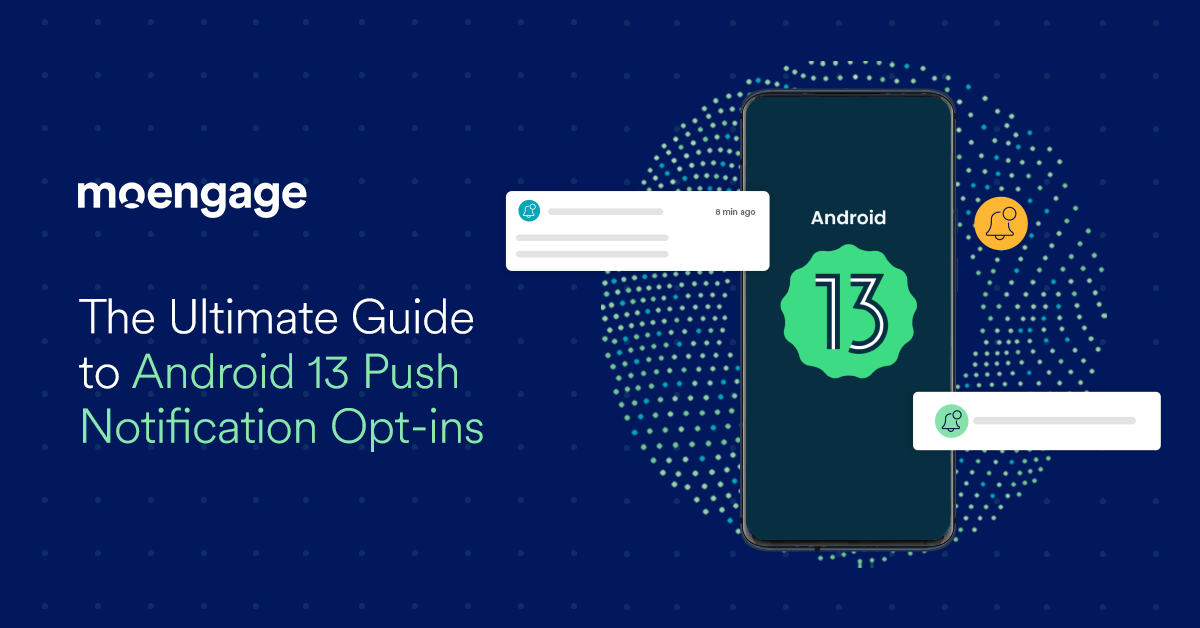
Reading Time: 8 minutes
Brands heavily rely on push notifications for customer communication and engagement. And for the longest time, they didn’t require explicit permission from customers to send push notifications on Android. The opt-in rates for Android devices were as high as 91.1% in 2019.
However, everything has changed since the release of Android 13. To safeguard privacy, Android 13 has given customers the power to control which apps they want to receive notifications from and those they don’t. Unlike the previous OS versions, brands now need to request permission from customers before triggering notifications.
While the change will impact opt-in rates, this challenge is a big opportunity for marketers to focus on their push strategies and create campaigns that help to deliver meaningful customer experiences and improve loyalty in the long run.
This post will share strategies and best practices on how brands can leverage this opportunity to increase Android 13 opt-in rates.
Android 13 and Push Notification Opt-in Adoption Trends
Before diving deep into the strategies, let’s quickly analyze the current adoption of Android 13 and push opt-in trends. The opt-in trend is based on the 1.3 billion consumers we analyzed on the MoEngage platform.
Overall Android 13 adoption
Although Android 13 was released in August 2022, its adoption is slowly rising.
According to Google’s internal data, Android 13 has doubled in market share since January 2023. Latest reports show that over 12.1% of Android devices globally had the latest Android 13 OS installed. Android 12 had a 16.5% share, while Android 11 still led the pack at 23.5%.
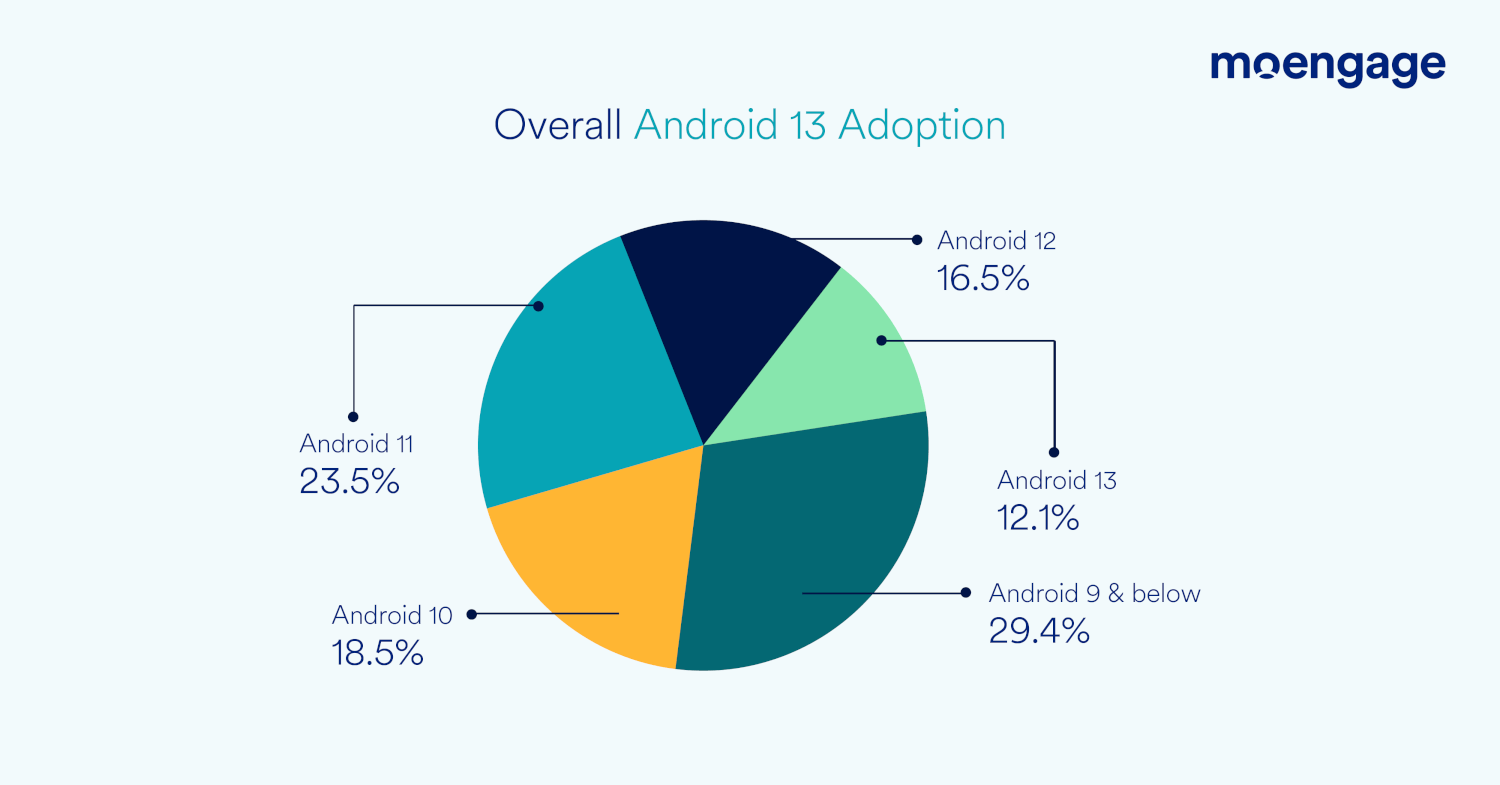
Among all customer engagement channels, push notifications have the highest reachability. But without an effective push opt-in strategy, reachability can significantly decrease as more customers move to Android 13.
Let’s understand this better by analyzing the push opt-in trend in different verticals –
E-commerce Push Notification Opt-in Rates
Below is the push opt-in trend for E-commerce and Food Delivery platforms.
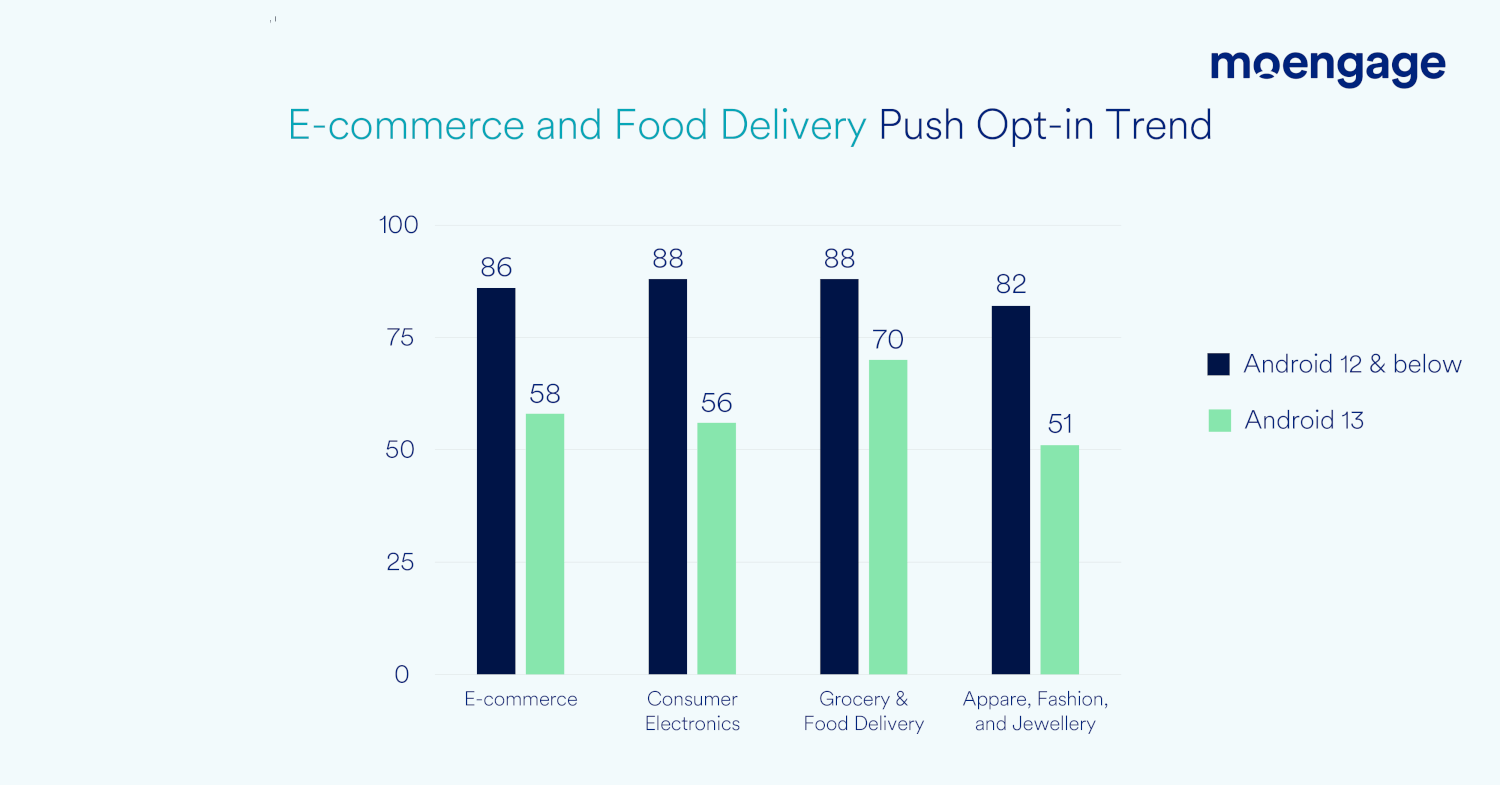
BFSI Push Notification Opt-in Rates
Below is the push opt-in trend for Banking, Crypto and Fintech platforms.
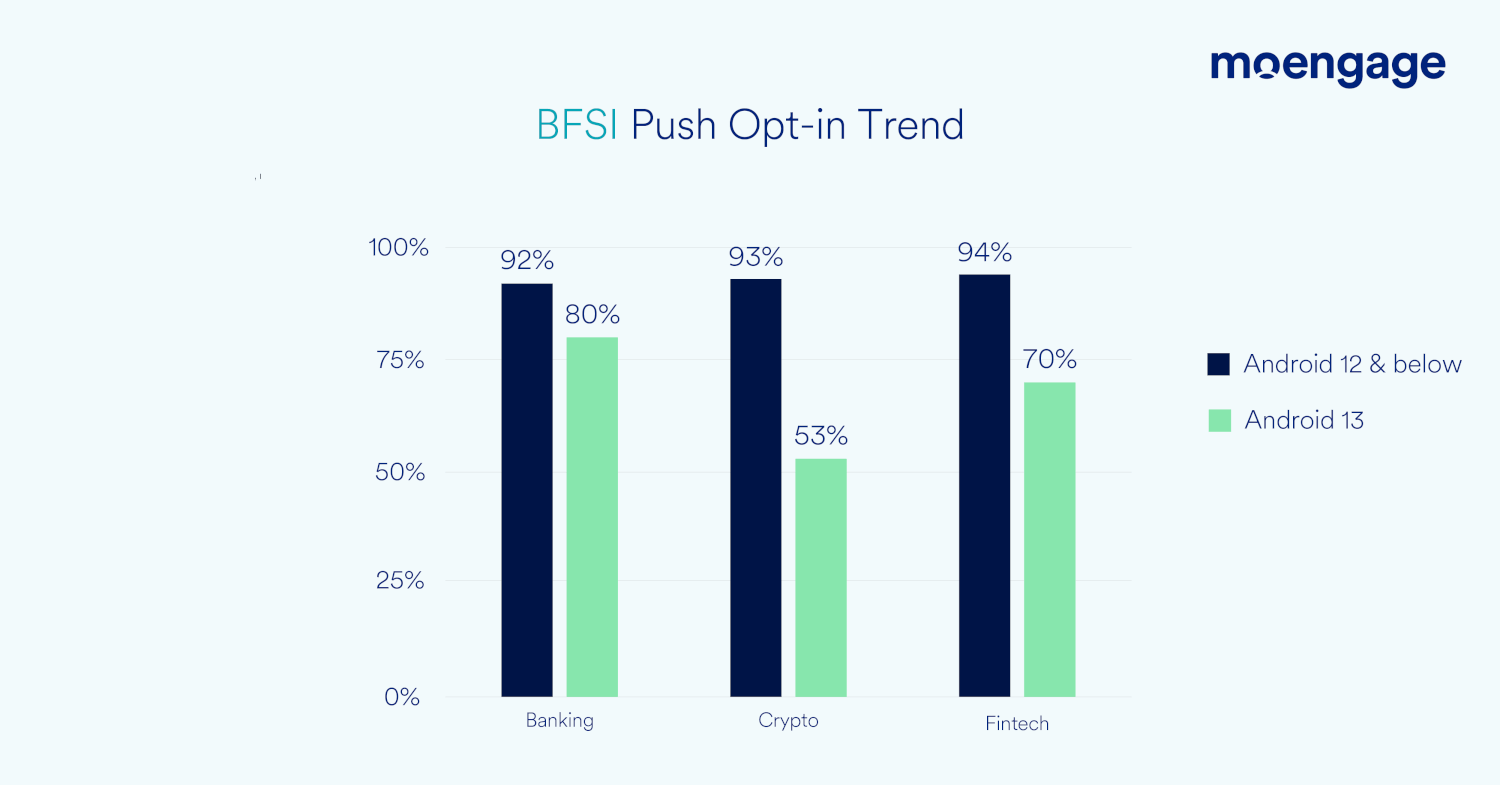
Travel and Logistics Push Notification Opt-in Rates
Here’s what our data shows when it comes to push opt-in trends for Travel and Logistics platforms.
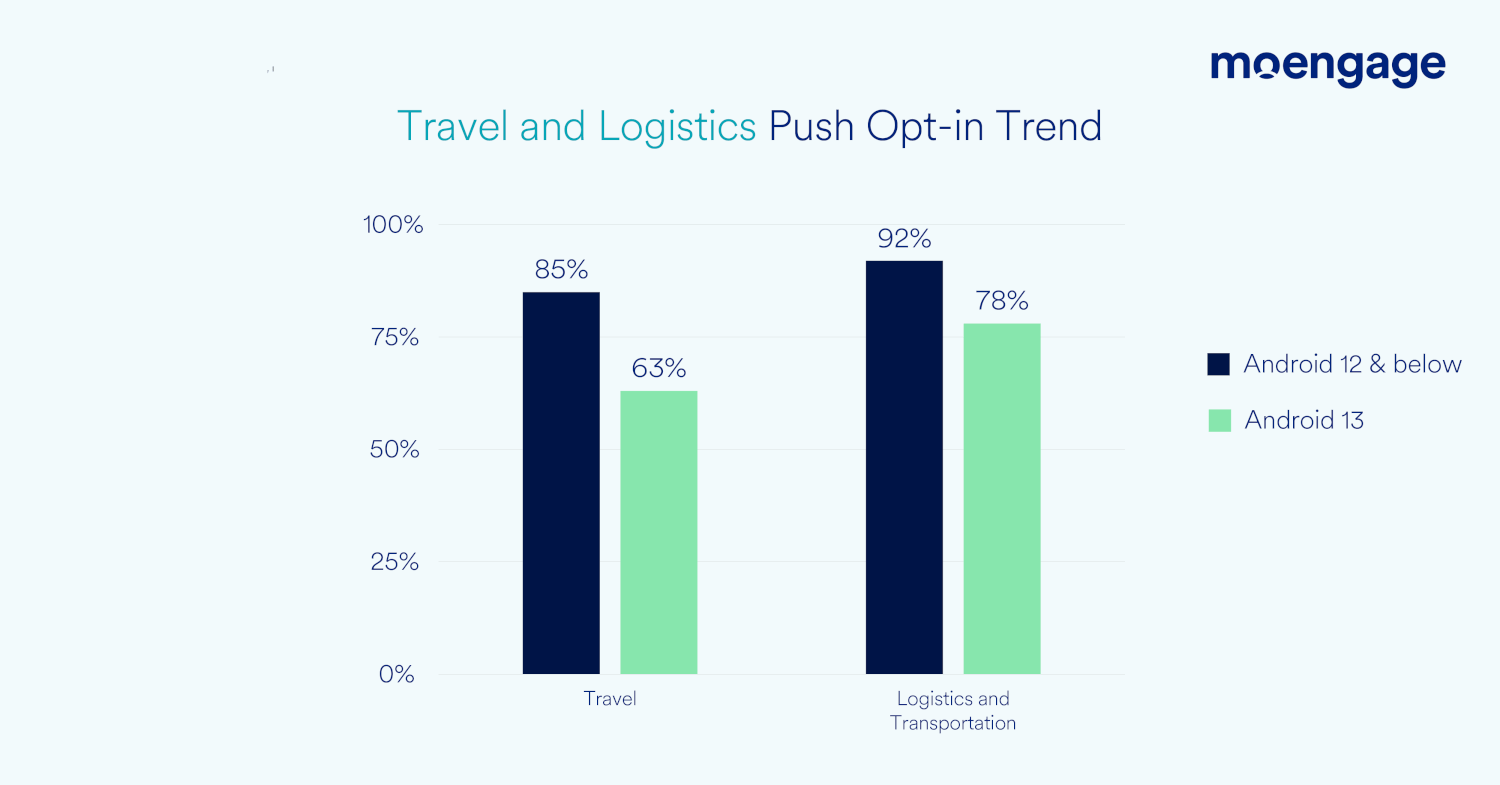
Media and Entertainment Push Notification Opt-in Rates
You’ll find the push opt-in rates for Media and Entertainment platforms below.
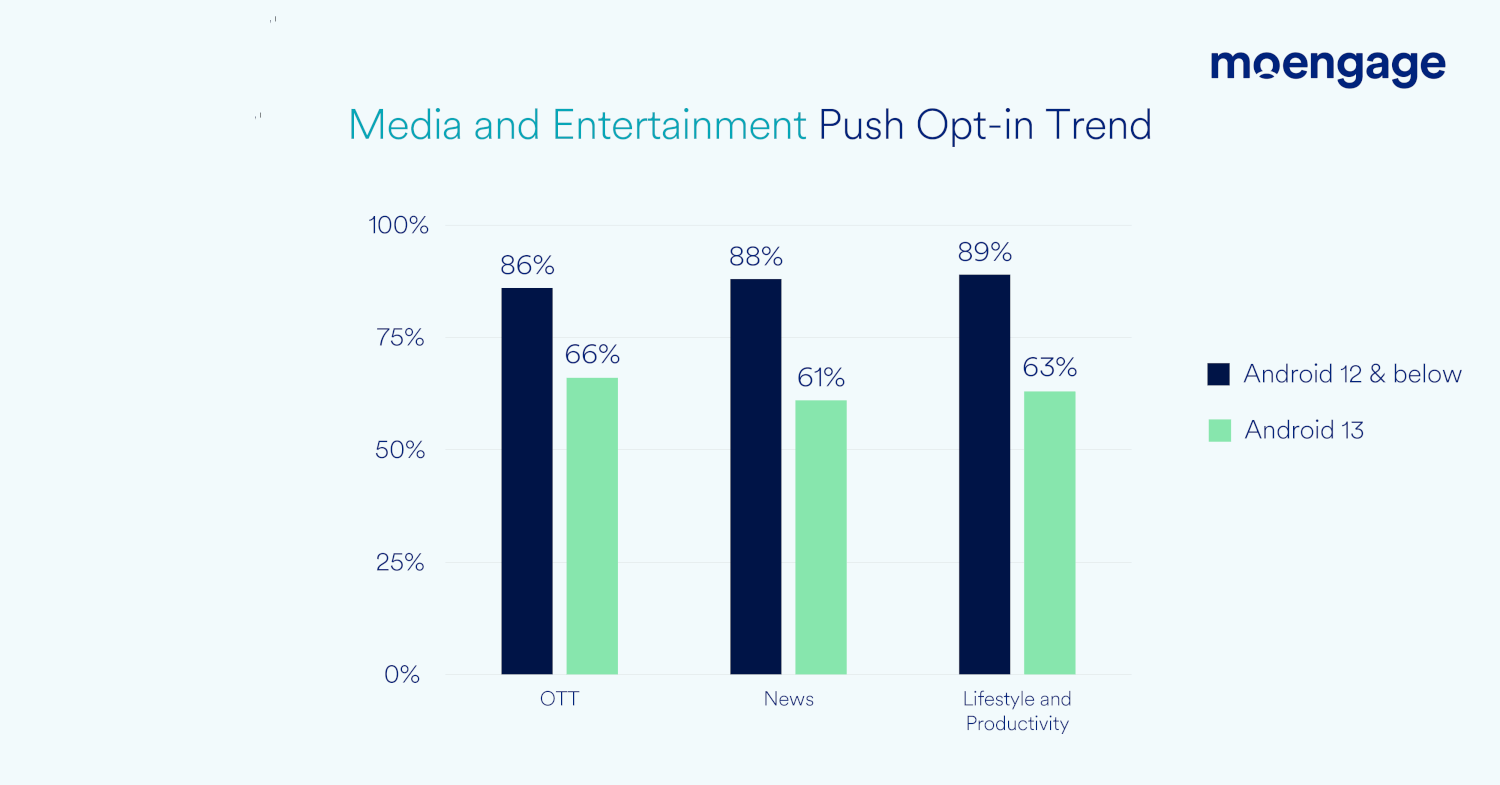
Push Notification Opt-in Trend Across Different Geographies
When we compare different geographies, Europe saw the highest average push opt-in rate, while the Middle East region saw the lowest Android push opt-in rate.
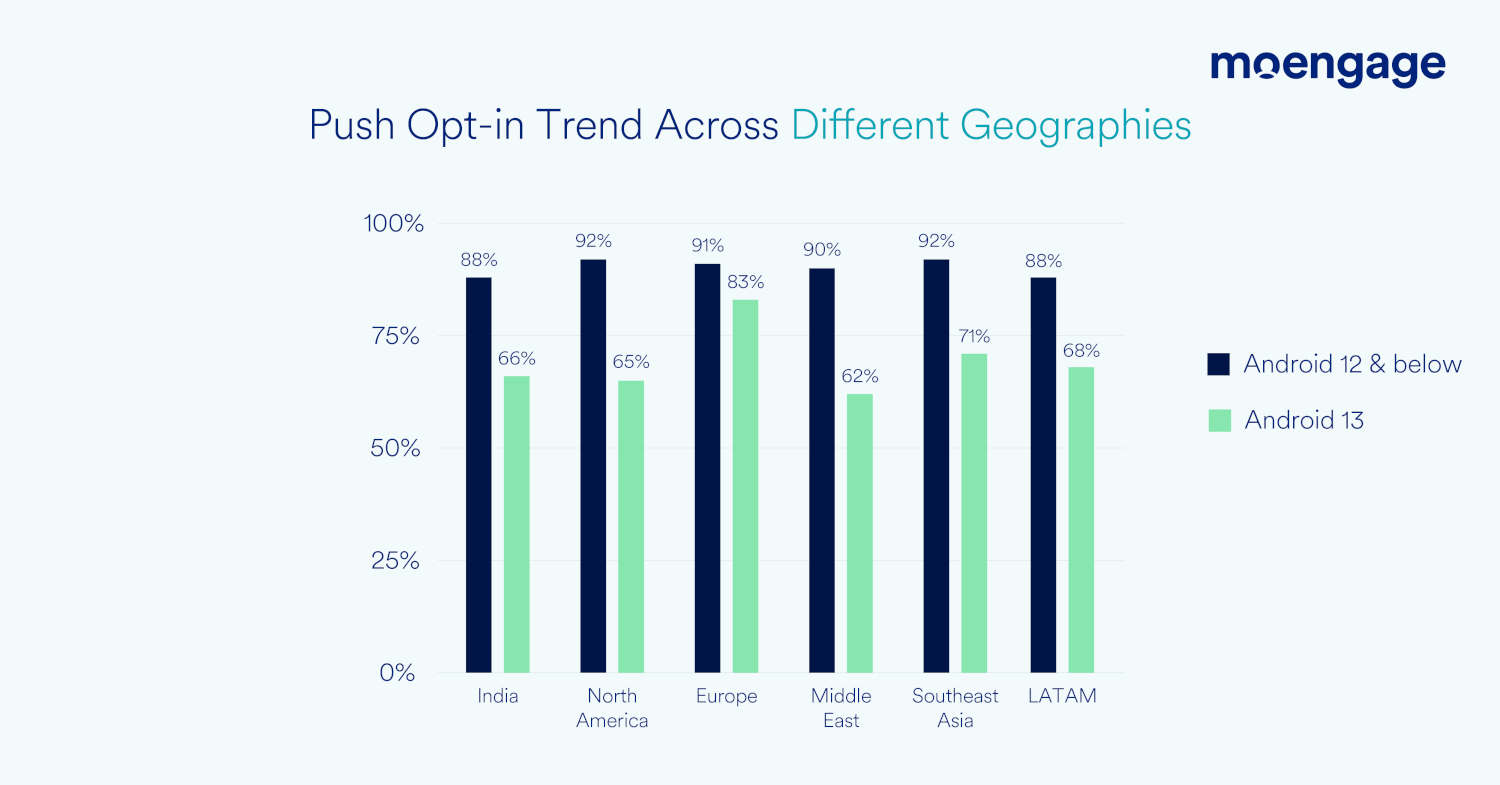
By the data above, it’s evident that brands need to create a robust opt-in strategy to ensure they can reach and engage with most of their customer base.
Lessons from iOS Push Notification Opt-ins
Although the overall adoption rate for Android 13 is still low, marketers must remember that opt-ins will soon become necessary for sending push notifications.
Take iOS’ example; only 45% of iOS customers were willing to receive push notifications. According to Flurry Analytics, 4% of customers pre-emptively opted out to avoid being tracked by brands and sent notifications.
The data clearly shows that customers may not choose to receive push notifications if given a choice. However, marketers can overcome this challenge with the following opt-in strategies –
1. Control the timing with Self-handled Opt-in
Customers are more likely to opt-in on certain pages and after certain events. For example, News apps can trigger opt-ins when the customer lands on breaking news. By opting-in, they can receive a notification whenever a breaking news alert occurs.
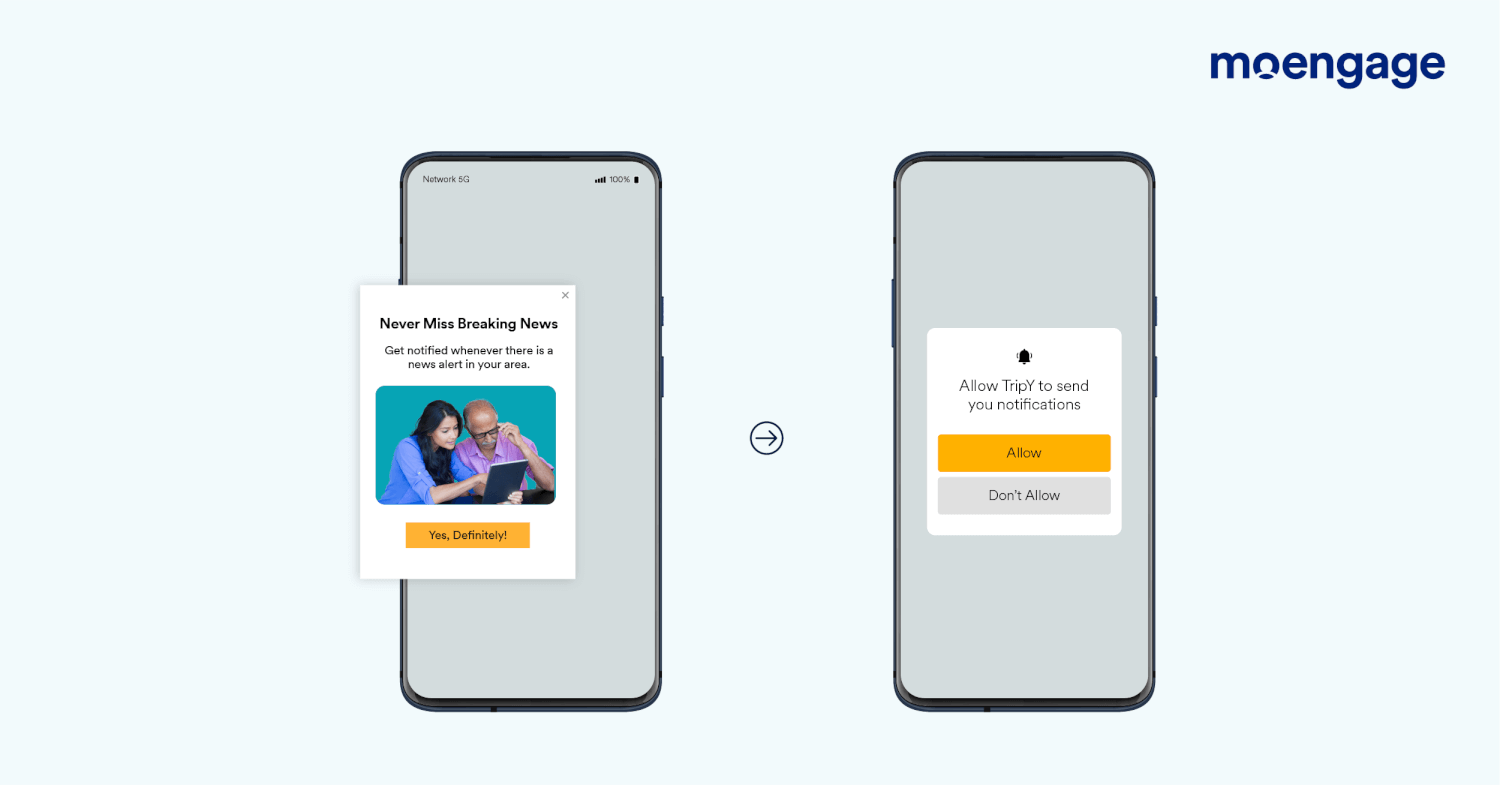
2. Communicate value with Two Step Opt-in
Leverage in-app prompts to explain the benefits of opting-in for push notifications. For example, Travel apps can tell customers that opting-in for push notifications would help them get notified about important updates about their booking.
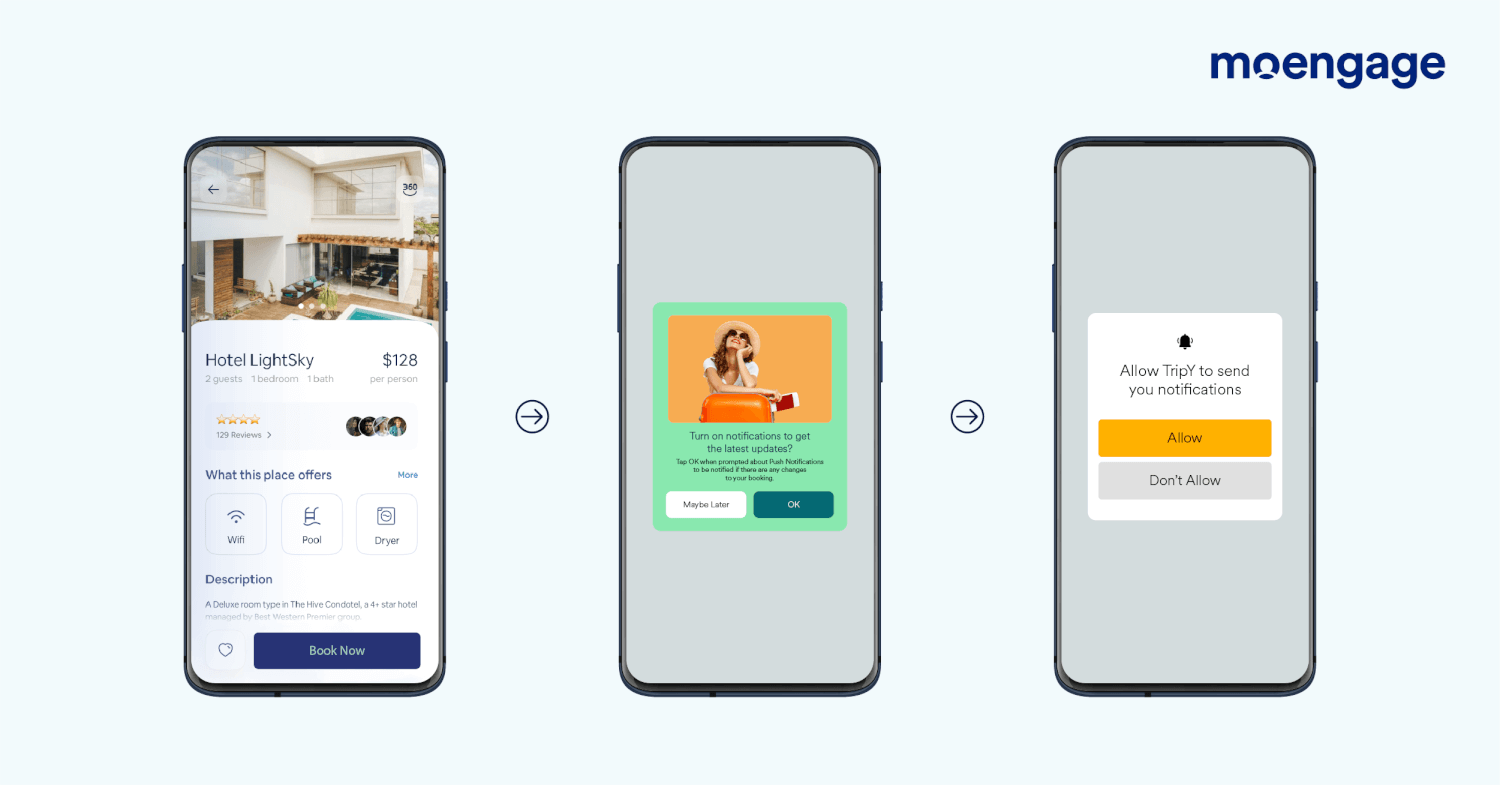
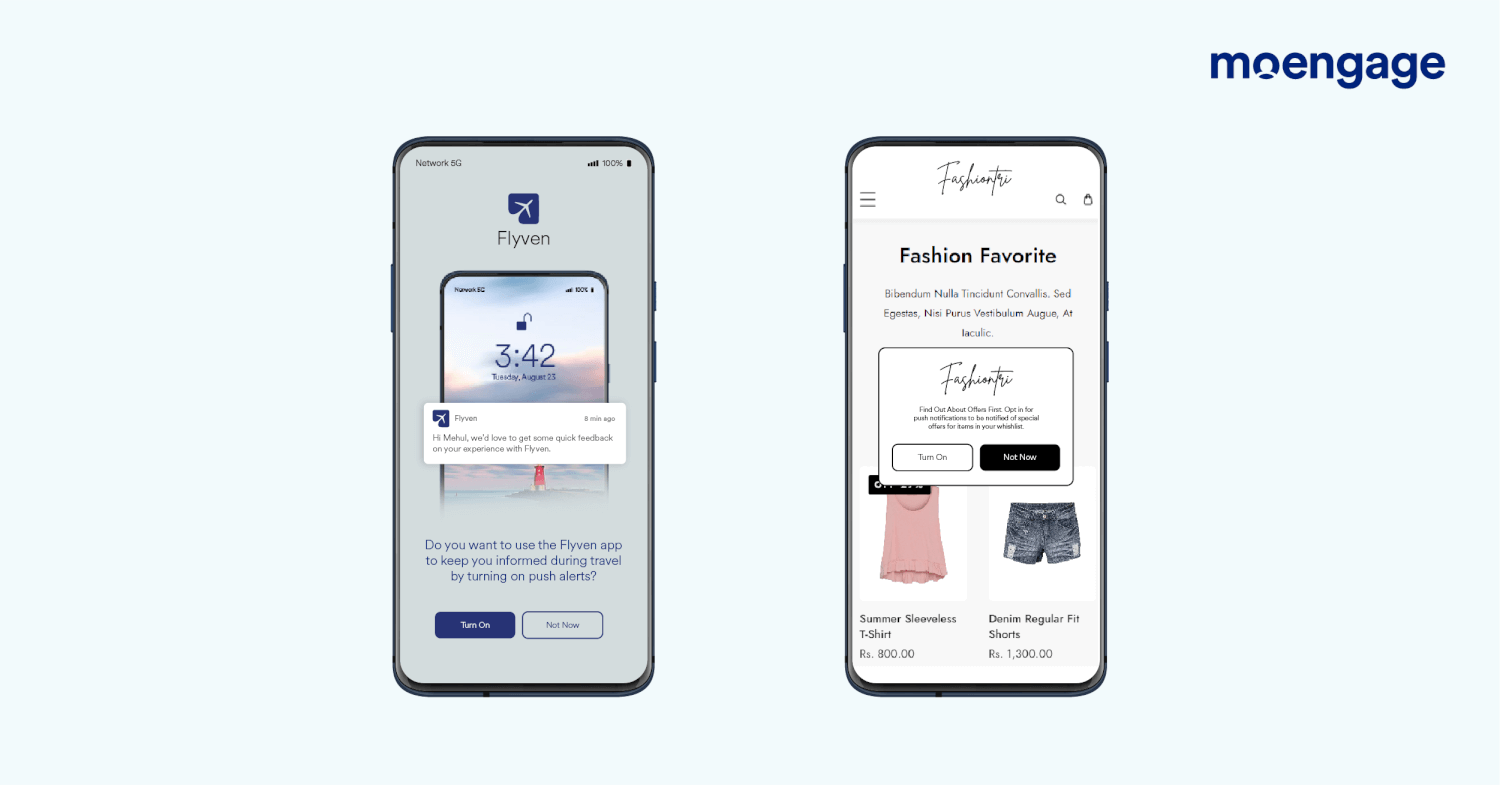
How MoEngage Can Help You To Increase Your Push Notification Opt-ins
In Android 13, you can control when and where to trigger the opt-in prompts. Since you can only trigger the native Push Opt-in prompt twice, brands need to be strategic about when they want to trigger for maximum opt-ins. The only customers can opt-in after this is by turning it on in the app settings.
MoEngage’s SDK allows developers to create tailored opt-in workflows to increase opt-ins for applications targeting Android 13. Let’s look how –
1. Tracking and Reachability
To drive more opt-ins, marketers need to track the percentage of opted-in customers to understand if the opt-ins have increased or decreased. Additionally, it’s also crucial to avoid sending repeated opt-in messages to customers who have already granted permission to receive push notifications.
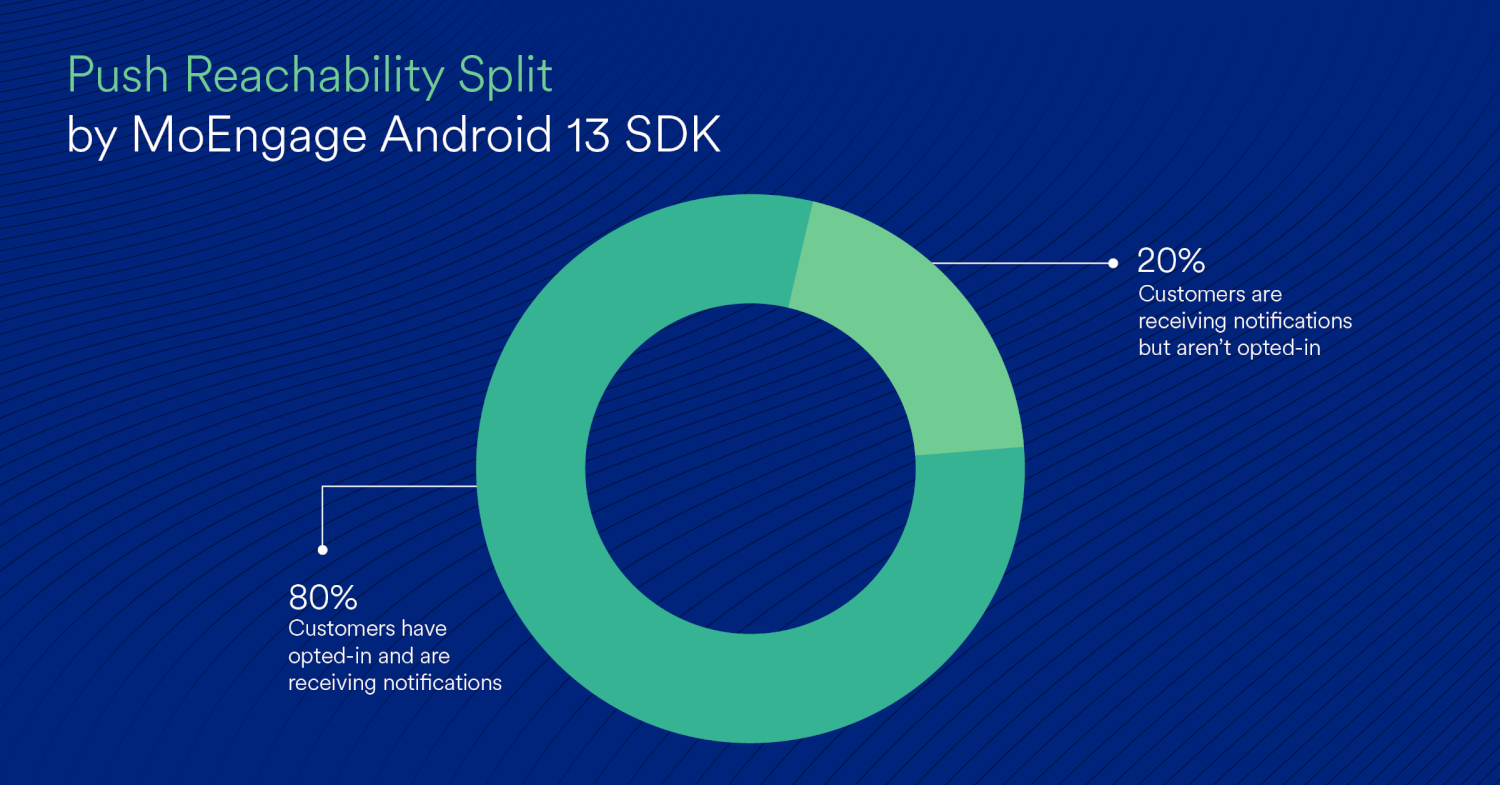
With MoEngage’s SDK, marketers can get an exact split of customers who have opted-in and opted out and identify the strategies that worked well and that didn’t.
Besides tracking, marketers must also measure reachability. Reachability measures the overall effectiveness of specific channels or platforms in reaching the target customers. MoEngage allows marketers to calculate push, email, and SMS reachability.
2. Track Push Permission Opt-in Status as a User Attribute
Since MoEngage tracks whether a customer has opted-in or opted-out, brands can use this data to filter out certain customers when sending campaigns. For example, opted-out users can be engaged more effectively using in-app messages than push notifications. This makes the opt-in status attribute very handy when sending campaigns.
3. Drive More Push Opt-in using Self-Handled Opt-ins and Two-Step Opt-ins
Self-Handled Opt-ins
Self-Handled Opt-ins are notifications that customers receive on pages or after an event. Nike has aced the game of displaying the prompt at the right time. Unlike Android 13, iOS allows brands to display opt-in messages only once, but they can show them to customers anytime.
Nike displayed the message at the end of the onboarding process, allowing them to build a relationship with customers before seeking consent.
Customers are more likely to opt-in if they see the benefits of receiving updates, so making the message contextually relevant is essential. Developers can use MoEngage’s SDK to configure self-handled opt-ins and filter out customers who have already opted-in or opted out. This way, they can display the opt-in message only to customers who’re yet to opt-in.
Two-step Opt-ins
Sometimes, customers want more information before agreeing to opt-in for push notifications. In such cases, we recommend using two-step opt-ins. Two-step opt-ins will display the opt-in message only if the customer selects ‘Yes’ in the in-app format. This gives customers more time to think and choose, and the chances of opt-in conversions increase too.
You can use MoEngage’s SDK to create two-step opt-ins. You can control the timings of the prompts and ensure that it’s displayed only when the customer selects ‘Yes’ in the in-app prompt.
Since Android 13 limits the number of times, brands can show the opt-in prompt to two. Hence, marketers need to leverage the Two Step Opt-in strategy to ensure they only show the prompt to customers when there’s a higher chance of opt-in.
4. Improve Delivery Funnel Accuracy by Excluding Opt-outs
Brands can choose to exclude the opt-outs when sending a push notification campaign to ensure brands can track their delivery, engagement, and conversion rates more accurately.
Strategies To Drive More Android 13 Push Notification Opt-ins For Different Verticals
Let’s look at what strategies different verticals can leverage to increase push opt-ins –
Retail/E-commerce
Retail and E-commerce brands can trigger the opt-in prompt after the customer makes a purchase or on the Orders page to seek permission from them to send real-time notifications about their orders, future discounts, and promotions.
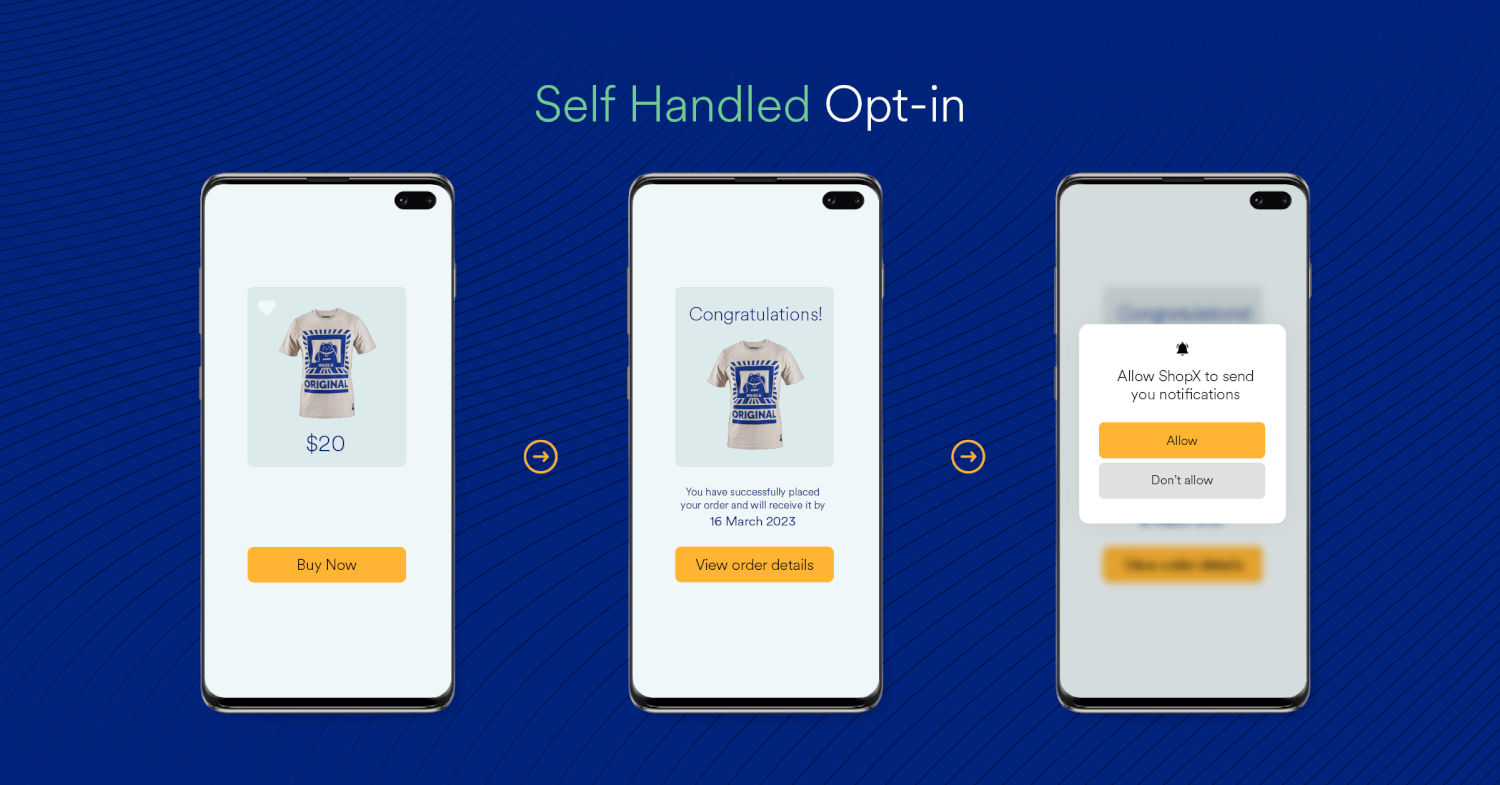
BFSI
BFSI brands can display opt-in messages after the customers complete the onboarding or the Know Your Customers (KYC) process to get consent to send notifications on transaction alerts, account balances, or updates on their loan and credit card requests.
For example, when a customer finishes their KYC process or fills out a loan/credit card application, send them a nudge to permit them to receive push notifications so they can get an update as soon the KYC is completed, or the application has been reviewed.
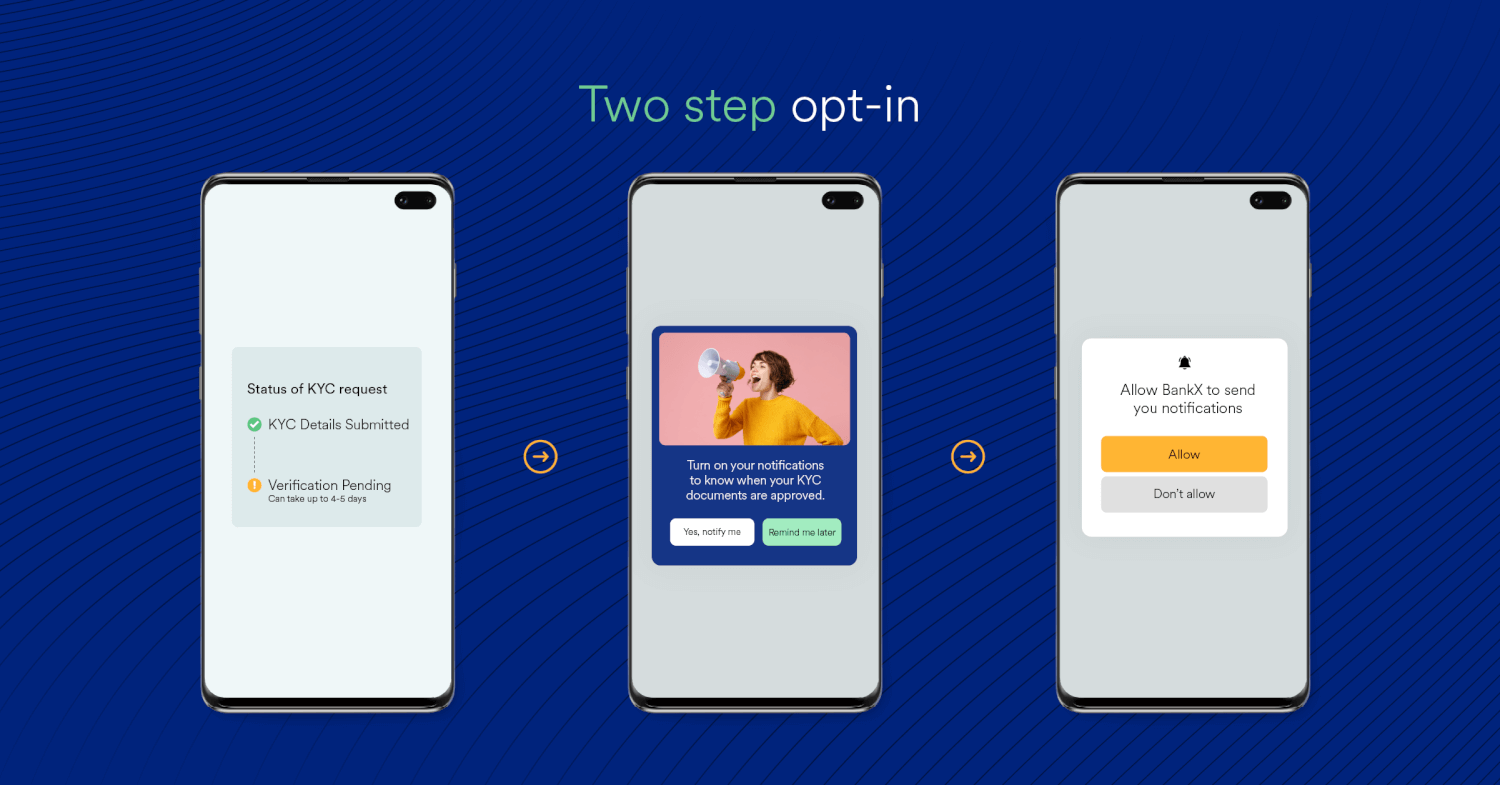
Media and OTT
OTT platforms can seek permission from customers to send them personalized reminders on new shows, movies, or live sports events. Marketers can trigger the opt-in message after the customer signs up and chooses their preferred genres, languages, and other details.
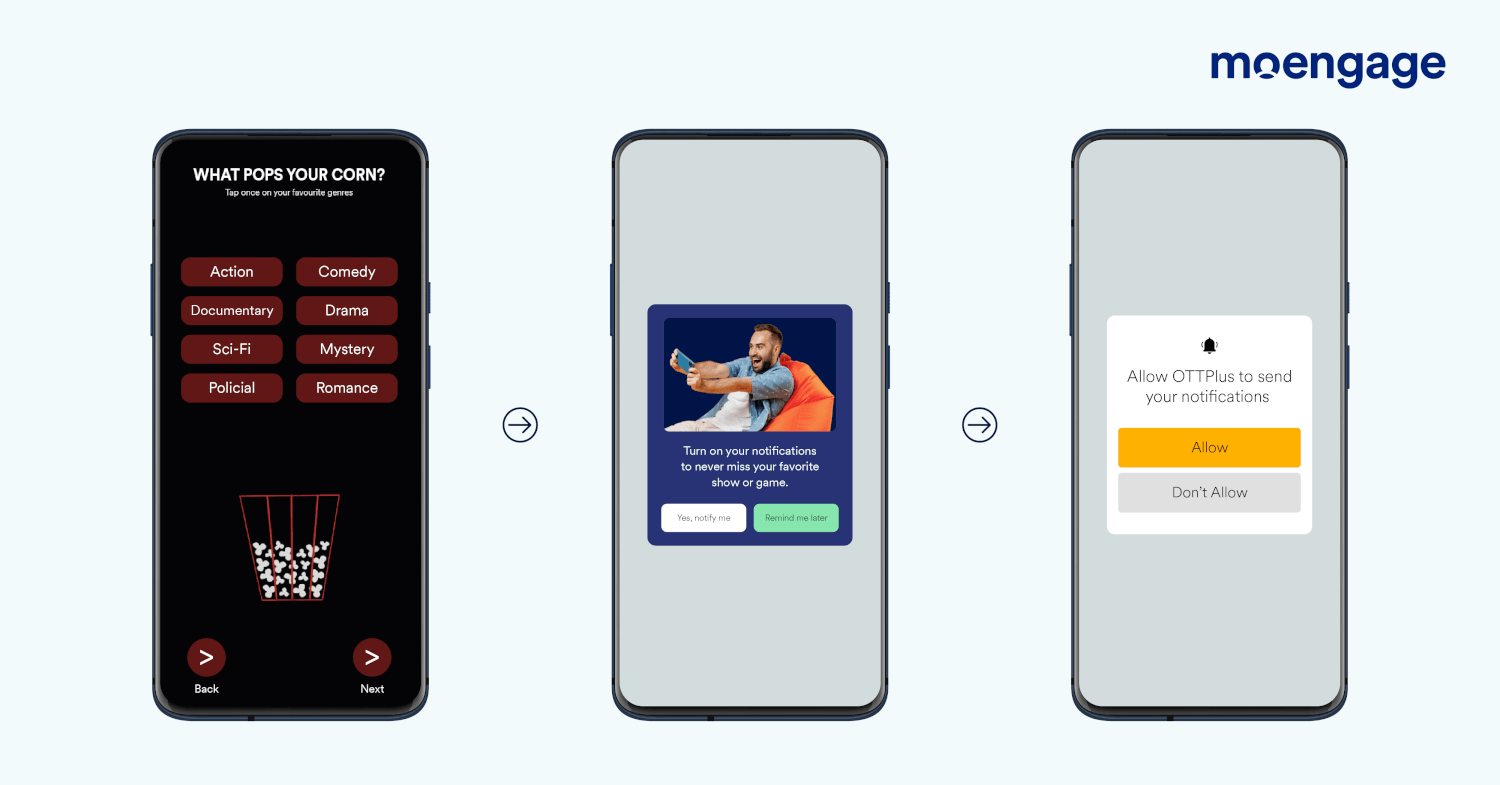
Best Practices to Drive Opt-ins
Let’s look at some strategies that can help you improve opt-in rates –
Perfecting Timing
Timing is crucial for maximizing the opt-in rates. Observe the event or pages that could drive the opt-ins, allow customers to explore the app first, and then trigger the opt-in messages. For example, a travel app sends a prompt message after the customer books a ticket, or an E-commerce app triggers it after the customer completes the first purchase.
Communicating Value
Ensure the message communicates the value of opting for push notifications. Letting customers know the value of notifications is a sure-shot way to boost opt-in conversions. For example, a financial management app can communicate how push notifications keep them updated about their transactions, account balances, and payment reminders.
Copywriting
Since Android 13 doesn’t allow brands to tweak copies or add images to the opt-in prompts, marketers must seek consent prudently. Ensure the value of push notifications is explained upfront to get more opt-ins. Demonstrate the benefits of opting-in using in-apps via the two-step opt-in method to customers before showing the opt-in prompt.
A/B Testing
Experimentation with triggers, opt-in method, and copies and creatives: Experiment with the opt-in message copies and creatives to maximize conversions. You can also perform A/B tests on opt-in methods to find the ones that could boost the opt-in rates.
For example, the two-step opt-in method is more effective than the single-step opt-in because they are likelier to click on ‘Yes.’ Also, observe the events and pages that could increase the chances of receiving consent and trigger opt-in messages.
Tracking and Analyzing results
Track the opt-in rates to determine if they increase or decrease. This will help you identify if the opt-in method, timing, or creatives and copies are performing or need any changes.
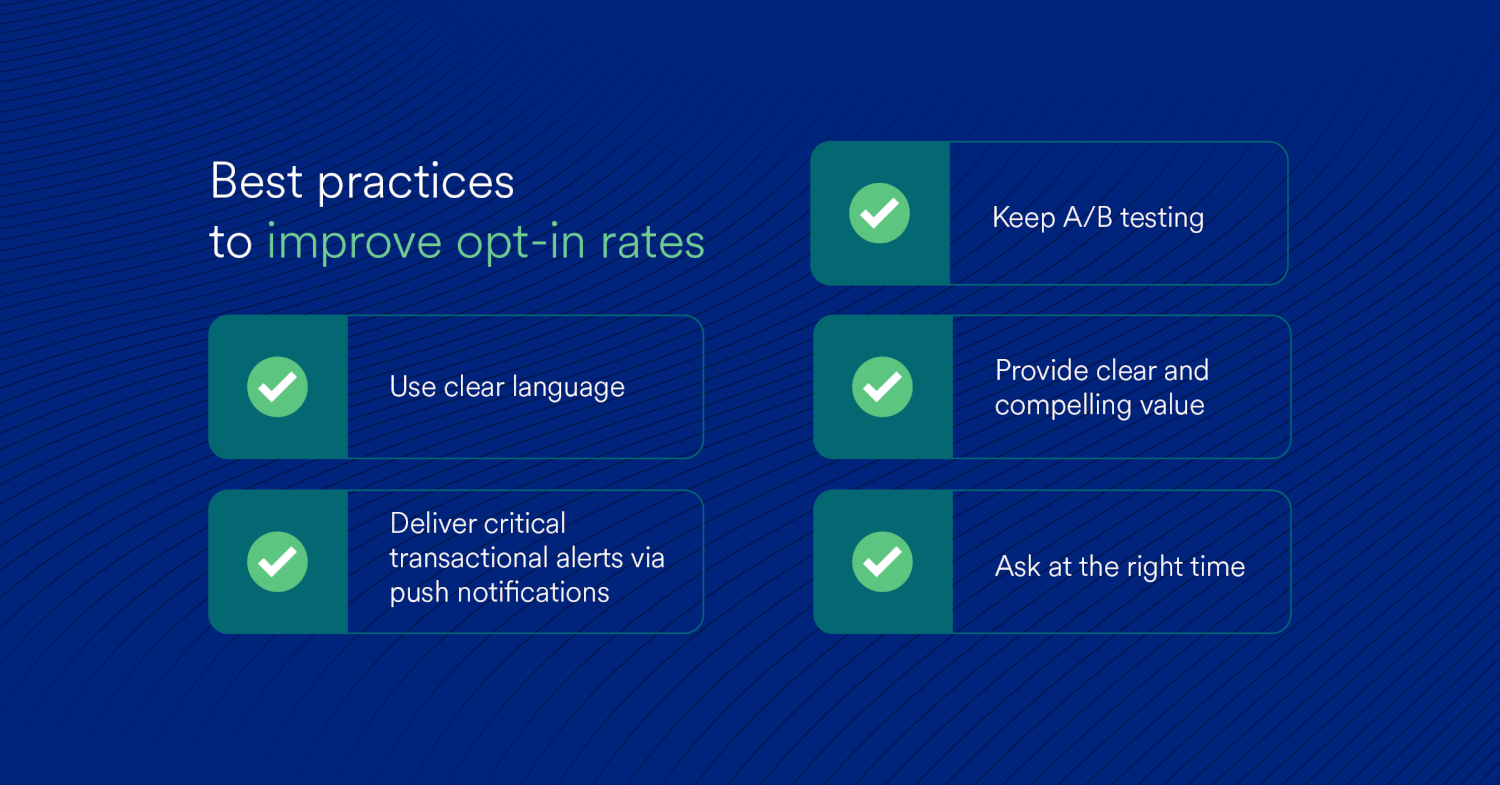
How to Leverage Other Channels to Educate and Drive Opt-ins
Below are few channels you can leverage to educate and drive more push opt-ins –
With over 2 billion active customers worldwide, WhatsApp is easily one of the best alternate channels for brands to inform customers. Brands can leverage platforms like MoEngage’s WhatsApp Native to send personalized rich texts to update customers about their order status or to tell them about new deals, discounts, and offerings. Besides that, they can also use this channel to request customers to opt-in for push notifications.
SMS
SMS is widely used in countries like the US. Brands can use them to send personalized transactional messages to customers and request permission to send push notifications. To make it more engaging, brands can use MoEngage’s SMS marketing platform to initiate two-way communication with customers. They can also use rich media templates to create interactive messages with images, videos, GIFs, and videos.
Content Cards
Content cards are interactive cards that provide customers with content and recommendations. Marketers can use content cards to send personalized content and engage with customers before asking them for permission to send push notifications.
What’s Next?
Albeit a slow start, Android 13 is showing some growth. From 5% in January, the adoption rate has doubled by April. The new Android version could soon outpace Android 12 and become as widely used as Android 11. This rapid adoption indicates that brands cannot be complacent about push notifications.
They must create a robust strategy of asking for opt-ins before sending push notifications. With solutions like MoEngage’s SDK for Android 13, brands can improve the opt-in rates and deliver push notifications to customers as always.
| Further Reading: |













